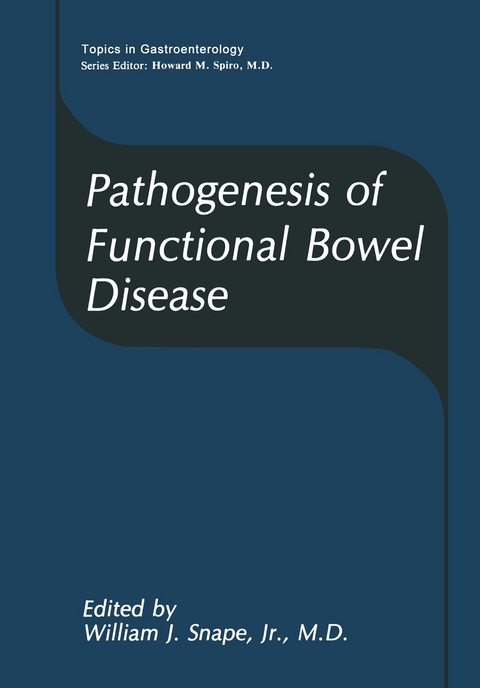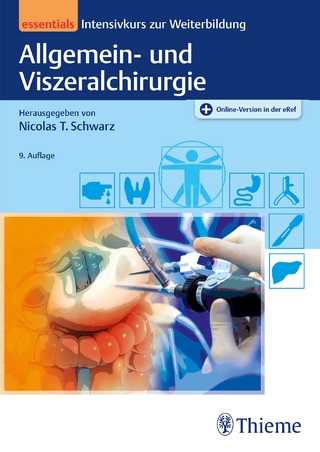
Pathogenesis of Functional Bowel Disease
Springer-Verlag New York Inc.
978-1-4684-5696-7 (ISBN)
In their second year in medical school, students begin to learn about the differences between "disease" and "illness." In their studies of pathology they learn to understand disease as pertubations of molecular biological events. And we clinicians can show disease to them by our scans, lay it out even on our genetic scrolls, and sometimes even point out the errant nucleotide. Disease satisfies them and us; at Yale, lectures on the gastrointestinal tract run from achalasia to proctitis. There is, alas, little mention of functional bowel disease or of the irritable or spastic colon, for that is not easy to show on hard copy. Functional bowel disease represents "illness," the response of the person to distress, to food, to the environment, and to the existential problems of living. In real life such matters are most important. Richard Cabot first found out at the Massachusetts General Hospital almost a century ago that 50% of the patients attending the outpatient clinic had "functional" complaints. The figure had grown to over 80% when the very same question was reexamined 60 years later.
1. Historical Perspectives of Functional Bowel Disease.- 1. Evolution of Clinical Concepts.- 2. Life Events, Emotions, and Functional Disorders.- 3. Conclusion.- References.- 2. Role of Neural Control in Gastrointestinal Motility and Visceral Pain..- 1. Introduction.- 2. Role of the Autonomic Nervous System in GI Motility and Visceral Sensation.- 3. Evidence for Alteration in Pain Perception (Visceral and Somatic) and Colonic Motility in IBS.- 4. Proposed Model for Alterations in Visceral Sensation and GI Motility in IBS.- References.- 3. Effects of Psychological Factors on Gastrointestinal Function.- 1. Introduction.- 2. Direct Effects of Psychological Stress on Gastrointestinal Physiology.- 3. Indirect Effects of Psychological Stress on Gastrointestinal Physiology.- 4. Effects of Psychological Traits on the Perception and Reporting of Bowel Symptoms.- 5. Social Learning Influences on Gastrointestinal Symptoms and Physiology.- 6. Conclusions and Implications for Treatment.- References.- 4. Central Control of Gastrointestinal Transit and Motility by Brain—Gut Peptides.- 1. Introduction.- 2. Central Nervous Structures Influencing Gastrointestinal Motility.- 3. CNS Action of Peptides to Influence Gastrointestinal Motility and Transit.- 4. Summary and Conclusions.- References.- 5. Effect of Diet on Intestinal Function and Dysfunction.- 1. Introduction.- 2. Effects of Eating on the Colon.- 3. Carbohydrate.- 4. Dietary Fiber.- 5. Other Dietary Factors.- 6. Conclusions.- References.- 6. Disorders of Intestinal Motility Resulting from Drug Therapy.- 1. Introduction.- 2. Cholinergic Agents.- 3. Adrenergic Agents.- 4. Dopaminergic Agents.- 5. Opiates.- 6. Calcium Channel Blockers.- 7. Prostaglandins.- 8. Antibiotics.- 9. Miscellaneous.- 10. Summary.- References.- 7. FunctionalDiseases of the Esophagus.- 1. Introduction.- 2. Clinical Presentation.- 3. Classification of EMDs.- 4. Diagnostic Studies.- 5. Approach to the Diagnosis of EMDs.- 6. Psychologic Abnormalities in EMDs.- 7. Medical and Surgical Therapies.- 8. Future Perspectives.- References.- 8. Functional Causes of Disturbed Gastric Function.- 1. Normal Physiology.- 2. Functional Disorders of Gastric Motility and Emptying.- 3. General Conclusions.- References.- 9. Functional Disorders of the Small Intestine.- 1. Introduction.- 2. Motor Activity of the Small Intestine in Health.- 3. Absorption and Secretion in the Small Intestine.- 4. Function of the Small Intestine in IBS.- 5. Summary and Interim Speculations.- References.- 10. Mechanisms and Management of Chronic Constipation.- 1. Introduction.- 2. The Diagnosis of Colonic Motor Dysfunction.- 3. Mechanisms of Chronic Constipation.- 4. Complications of Chronic Constipation.- 5. Treatment.- References.- 11. Irritable Colon Syndrome.- 1. Epidemiology.- 2. Clinical Symptoms.- 3. Diagnosis.- 4. General Pathophysiology.- 5. Pathophysiology of Specific Condition.- 6. Treatment.- 7. Conclusion.- References.- 12. Association between Disturbances in Gastrointestinal Transit and Functional Bowel Disease.- 1. Esophageal Transit.- 2. Gastroduodenal Transit.- 3. Small Bowel Transit.- 4. Colonic Transit.- 5. Stress- and Meal-Related Alterations in GI Transit.- 6. Effects of Treatment on Altered GI Transit.- 7. Summary.- References.- 13. Abdominal Pain and Biliary Tract Dysmotility.- 1. Introduction.- 2. Bile Flow within the Biliary Tract.- 3. Biliary-Type Pain—Referred versus Real.- 4. Biliary Tract Disorders of Functional Nature.- 5. Sphincter of Oddi Manometry.- 6. Clinical Classification of Patients with Suspected Sphincter of OddiDysfunction.- 7. Primary Sphincter of Oddi Motor Dysfunction.- References.- 14. Disorders of the Anal Sphincters.- 1. Anatomy.- 2. The Incompetent Sphincter.- 3. The Obstructed Sphincter.- 4. The Irritable Anorectum.- References.- 15. Functional Bowel Disturbances in Childhood.- 1. Infantile Colic.- 2. Gastroesophageal Reflux.- 3. Chronic Nonspecific Diarrhea (Toddler’s Diarrhea).- 4. Constipation and Functional Fecal Retention.- 5. Functional Recurrent Abdominal Pain.- 6. Chronic Intestinal Pseudoobstruction.- References.- 16. Surgical Approach to Functional Bowel Disease.- 1. Introduction.- 2. Motility Disorders of the Esophagus.- 3. Motility Disorders of the Stomach.- 4. Biliary Dyskinesia.- 5. Intestinal Pseudoobstruction.- 6. Colonic Dysmotility Syndromes.- 7. Summary.- References.
| Erscheint lt. Verlag | 13.3.2012 |
|---|---|
| Reihe/Serie | Topics in Gastroenterology |
| Zusatzinfo | 16 Illustrations, black and white; XX, 388 p. 16 illus. |
| Verlagsort | New York, NY |
| Sprache | englisch |
| Maße | 170 x 244 mm |
| Themenwelt | Medizin / Pharmazie ► Gesundheitswesen |
| Medizinische Fachgebiete ► Chirurgie ► Viszeralchirurgie | |
| Medizinische Fachgebiete ► Innere Medizin ► Gastroenterologie | |
| Medizinische Fachgebiete ► Innere Medizin ► Hepatologie | |
| ISBN-10 | 1-4684-5696-2 / 1468456962 |
| ISBN-13 | 978-1-4684-5696-7 / 9781468456967 |
| Zustand | Neuware |
| Informationen gemäß Produktsicherheitsverordnung (GPSR) | |
| Haben Sie eine Frage zum Produkt? |
aus dem Bereich


